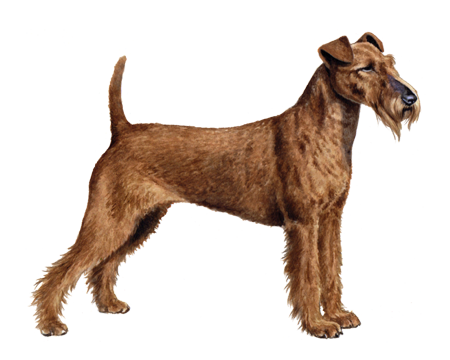
Norwich Terrier
The Norwich Terrier is an intelligent, playful, and loyal dog. They tend to be friendly with everyone they meet. Though it may be one of the smallest working terrier breeds, the Norwich Terrier is a lively, sociable dog.
Interested in discovering if your dog is a Norwich Terrier?
Check out Wisdom Panel's DNA tests.

Norwich Terrier Traits
General Appearance
Solid and substantial for a little dog, the Norwich Terrier has a rugged look but has an expressive face and cuddly body.
Coat and Coloring
The Norwich Terrier's wiry coat comes in a range of red shades, wheaten, black and tan, or grizzle (small amount of black hairs in the coat). A black saddle is common, and other black markings—including points or a mask—are rare but possible.
Distinctive Physical Traits
The Norwich Terrier's erect, pointed ears differ from this breed's look-alike cousin, the Norfolk Terrier, and make it look somewhat like a fox.
Norwich Terrier Temperament
Norwich Terriers have a courageous and clever disposition. Sensitive and good-natured, they make ideal family dogs—loving their people more than anything else in the world.
Though they can be assertive (not aggressive), Norwich Terriers treat most everyone kindly. They may bark at a visitor or stranger, but only until they realize there's no danger.
With high energy and a strong prey drive, this breed loves to chase small animals. So, a leash or fenced-in yard is a must during any outdoor time.


Norwich Terrier History
In the 19th century, breeders mixed red and black-and-tan hunting terriers belonging to a British sportsman. The resulting breed—now known as the Norwich Terrier—quickly gained popularity at Cambridge University. Students kept the dogs in their dorm rooms, and the Norwich Terrier eventually became the official mascot of the university.
Norwich Terriers came to the United States after World War I. The English Kennel Club accepted the breed in 1932, and the American Kennel Club recognized it as the Norfolk Terrier in 1936. The breed ultimately received independent recognition as the Norwich Terrier in 1979.
From its early days as a university favorite, the Norwich Terrier has graduated to become one of the world's most adored breeds.
Norwich Terrier Care
Nutrition
The Norwich Terrier requires a high-quality dog food that's age-appropriate. It's wise to monitor how much your Norwich Terrier eats and reduce portions if your pup gains weight. Also, remember that giving too many treats in addition to regular meals can contribute to obesity.
Grooming
Norwich Terriers need regular grooming. The hard, outer coat and the soft undercoat of this breed benefit from hand-stripping. This process of pulling dead hair from the outer coat and excess hair from the undercoat promotes new hair growth.
Exercise
The Norwich Terrier requires ample physical and mental exercise. That could mean taking a long walk, playing with other pets and people, or participating in dog sports. Earthdog trials, agility, racing, lure coursing, tracking, flyball, musical freestyle, and competitive obedience are all great activities for a Norwich.
Early socialization is also a good idea for this outgoing breed.
Training
Norwich Terriers are eager to please. And they respond well to training but can sometimes be a bit stubborn. Overcome this by using motivational tools—such as treats and favorite toys—and other reward-based obedience methods with your Norwich Terrier.

Norwich Terrier Genetic Health Conditions
-
Cystic Renal Dysplasia and Hepatic Fibrosis
Cystic renal dysplasia and hepatic fibrosis is a disorder causing renal (kidney failure) and liver scarring (fibrosis)
-
Primary Lens Luxation
Primary Lens Luxation (PLL) is a condition that can cause the lens of the eye to become loose and eventually displace. The disorder is caused by degeneration of the fibers that hold the lens in place.
Knowing if your Norwich Terrier is a carrier or at-risk for these conditions can help you and your veterinarian plan for your pup’s lifelong care. With Wisdom Panel™ Premium, you can get results for over 200 genetic health tests.
Breed Group
Terrier
The Terrier Group ancestors were bred to hunt and kill vermin. They are often characterized as feisty and energetic dogs whose sizes range from fairly small to much larger.
Resources
https://www.akc.org/dog-breeds/norwich-terrier/
https://www.google.com/books/edition/Norwich_Terrier/uLYJBgAAQBAJ
Reviewed July 26, 2020 by Annette Louviere, DVM
































































